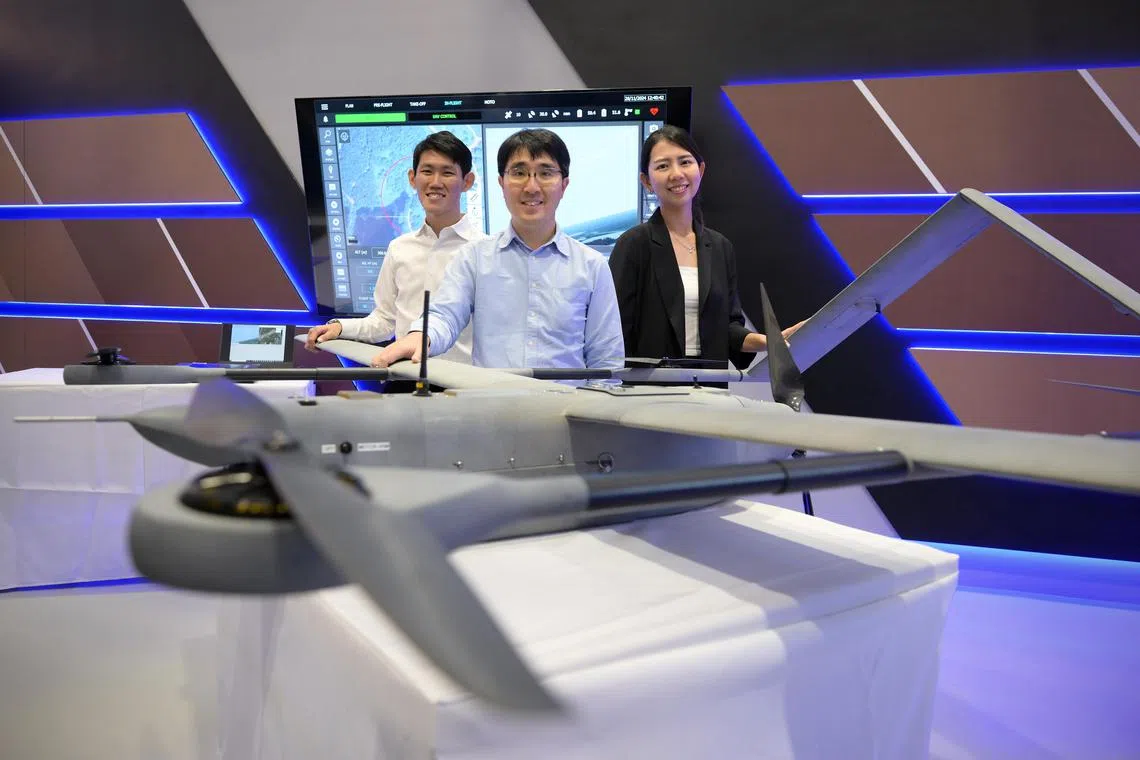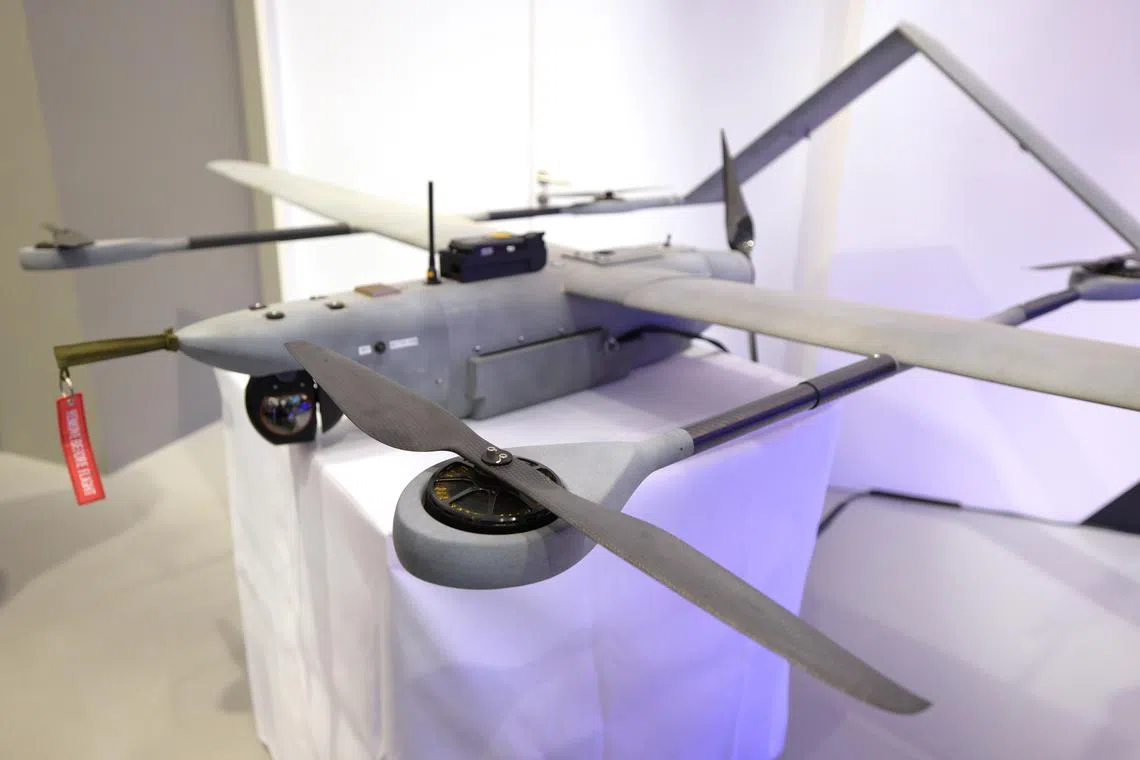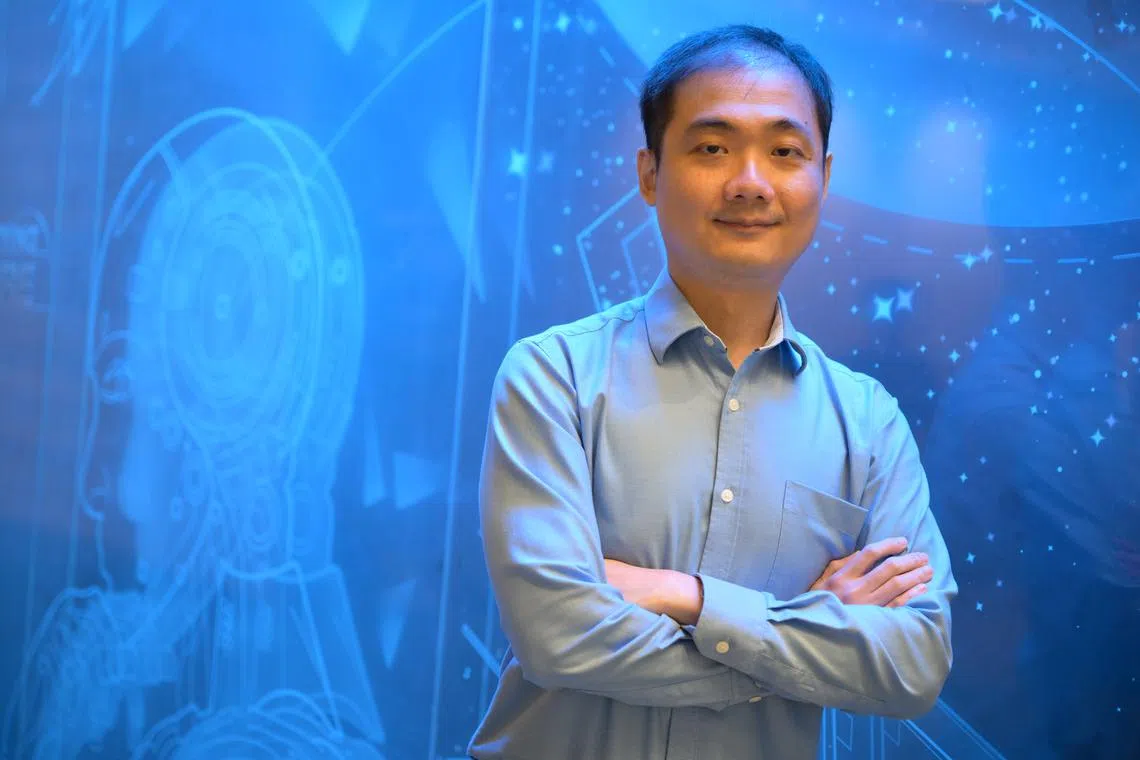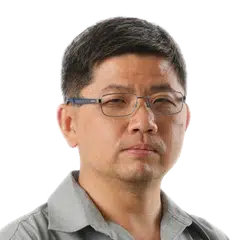Singapore-developed unmanned aircraft scoops up defence technology prize
Sign up now: Get ST's newsletters delivered to your inbox

Mr Ong Chengli (centre) with members of his team, Mr Chua Yong Chun and Ms Valerie Chia, who contributed to the development of the V15 UAV.
ST PHOTO: NG SOR LUAN
Follow topic:
SINGAPORE – The Singapore Army now uses an unmanned aircraft for aerial surveillance that can be deployed by two soldiers in 10 minutes without the need for tools.
It takes off and lands vertically like a helicopter, and has a carbon-fibre propeller so it is less noisy and harder to detect.
On Nov 26, a team from DSO National Laboratories that contributed to the design, manufacture and fielding of the V15 mini-unmanned aerial vehicle (UAV) clinched a Defence Technology Prize Team (Research and Development) award.
The team was led by Mr Ong Chengli, programme director at the robotics division at DSO, Singapore’s national defence research and development organisation.
Defence Minister Ng Eng Hen presented the Defence Technology Prize to two individuals and four teams at an award ceremony held at the DSO Auditorium.
Established by the Ministry of Defence (Mindef) in 1989, the annual award recognises individuals and teams that have made significant technological contributions to Singapore’s defence capabilities. The prize also serves to foster technological innovation and encourage breakthroughs in defence science and technology.
Mr Ong said the V15’s unique take-off and landing capabilities mean that it is a lot easier to deploy, and does not require a large area to operate from.
Older UAVs need either specialised launch and recovery systems, such as a catapult to launch and a parachute to land, or a runway to take off and land. Operators thus have to bring the extra equipment to the field or need a larger space for a runway to launch and recover the UAV.
The battery-powered V15 can also be dismantled into parts and packed into a crate, and can be deployed by two soldiers in 10 minutes without the need for tools.
The carbon-fibre propeller, which is used for forward flight, was specially designed and custom-manufactured for higher efficiency and a reduced noise signature, to make the V15 less likely to be heard by people on the ground.
To ensure that the rotors that enable the mini-UAV to take off and land vertically do not create aerodynamic forces that interfere with the propeller, the development team carried out aerodynamic tests in a wind tunnel and also used computational fluid dynamics software that simulated these forces.
“We have achieved a reliable, simple system to operate and deploy anywhere for aerial surveillance,” said Mr Ong, who has been with DSO since 2007 and the V15 development team since 2017.

The battery-powered V15 can also be dismantled into parts and packed into a crate, and can be deployed by two soldiers in 10 minutes without the need for tools.
ST PHOTO: NG SOR LUAN
Speaking at the awards ceremony, Dr Ng said the rapid pace of evolution in technology means that militaries ask themselves if they are ready for wars of the future, which will be shaped by such technologies.
He cited Ukraine’s use of unmanned boats and even jet skis packed with explosives to keep the Russian Navy and its larger, more powerful ships at bay in the western Black Sea as an example of the use of evolving technology in combat.
“To get ahead of the curve, or even to keep up with it, requires militaries to evolve new, innovative structures,” said Dr Ng, who suggested hybrid “start-up-like teams” with greater autonomy in Mindef and the Singapore Armed Forces (SAF), to allow for what he called closer op-tech integration.
Picking up a Defence Technology Prize this year was Mr Ong Khoon Kiat, director of technology development and collaboration at the Defence Science and Technology Agency (DSTA) information programme centre.

Mr Ong Khoon Kiat is director of technology development and collaboration at the DSTA information programme centre.
ST PHOTO: NG SOR LUAN
He won an individual engineering award for his work in developing systems that enable Mindef and the SAF to deal with online threats. He was previously on the team that won a Defence Technology Prize in 2021 for Covid-19 command and control systems.
He said his team uses the latest artificial intelligence and data science technologies to help analyse potentially harmful content such as propaganda or deepfakes, including scouring the Dark Web for threats.
They have also collaborated with companies and research institutes to bring in new technologies to complement in-house developed capabilities, to swiftly develop measures to counter the latest tactics employed by threat actors.
In his speech, Dr Ng said Mindef and the SAF must continue to stay abreast of new and emerging threats, like it has done for the past six decades. Current threats stem from new technologies such as unmanned systems and cyber intrusions.
“We do it through our determination, our effort and our ingenuity, so that we can position Singapore with the best possible defence against today’s threats and tomorrow’s challenge,” he added.



